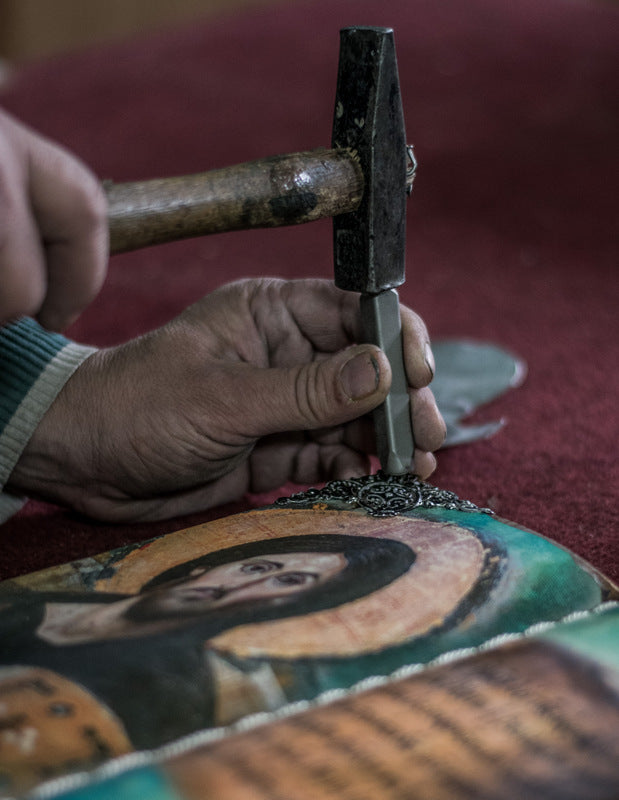Love it? Add to your wishlist
Your favorites, all in one place. Shop quickly and easily with the wishlist feature!
[title]
[message]TheHolyArt
Couldn't load pickup availability
This byzantine icon is a lithography with double varnish layer to ensure vivid colors and waterproof properties depicting the holy father among the saints Saint Nectarios of Aegina. Nectarios of Aegina (1 October 1846–8 November 1920),[2] Greek: Άγιος Νεκτάριος Αιγίνης, Metropolitan of Pentapolis and Wonderworker of Aegina, is one of the most renowned Greek saints and venerated both in the Eastern Orthodox Church and the Catholic Church and officially recognized by the Ecumenical Patriarchate of Constantinople in 1961. His feast day is celebrated every year on 9 November. This icon is an exact copy of the byzantine original and is an god inspired artwork abiding to the Athonian technique that was gives this icon unique religious and aesthetic value.
St. Nectarios was born on October 1, 1846, in Selymbria in Thrace to a poor family. His given name was Anastasios Cephalas. At the age of 14 he moved to Constantinople (Istanbul) to work and further his education. In 1866 he left to the island of Chios to take a teaching post. He then became a monk at the age of thirty.
An icon of St. Nectarios of Aegina
Many people regarded St. Nectarios as a saint during his lifetime because of his prayerful life, his humility, his purity and other virtues, and his writings, as well as the miracles he performed. St. Nectarios also had the gift of prescience.
The relics of St. Nectarios were removed from the grave on September 2, 1953, and gave out a beautiful fragrance. Official recognition of Nectarios as a saint by the Ecumenical Patriarchate of Constantinople took place on April 20, 1961. Thousands of miracles have been attributed to his intercession, particularly cases of cancer or other serious illnesses being cured.
Can be hung on a wall or placed on a flat surface.
The item is sold without the stand depicted.










We intentionally and respectfully design our pieces to transcend passing trends. We believe in creating timeless items that will uplift your Spirit and bring you closer to Him.
"James 4:8 (NLT) says,“Come close to God, and God will come close to you. Wash your hands, you sinners; purify your hearts, for your loyalty is divided between God and the world."